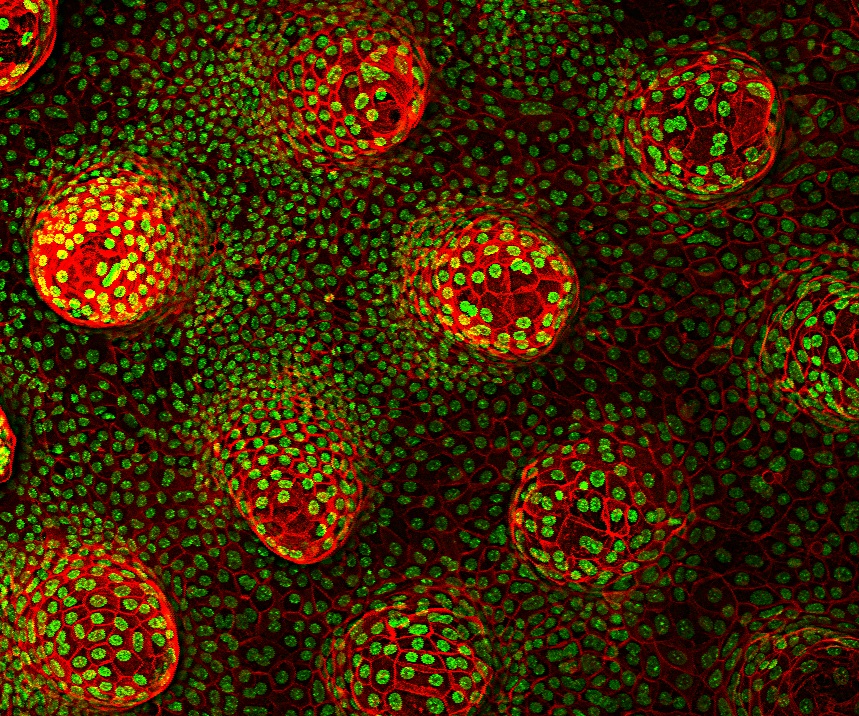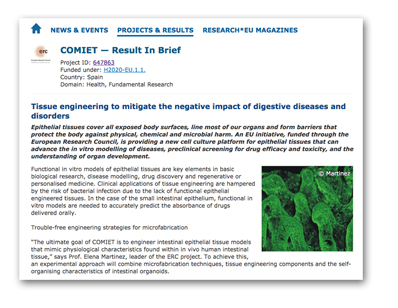About
The “Biomimetic Systems for Cell Engineering” group is a multidisciplinary research group focussing its research activities on the development and application of new artificial systems that mimic tissue micro and nanofeatures for biomimetic in vitro assays.
The use of more biomimetic and complex 3D models in in vitro assays is now a hot and extremely relevant topic.
“Flat biology” results are questioned when being transferred to in vivo, while the pressure to decrease animal testing continues increasing. As a group of engineering providers working in the biotechnological field, we see these issues as both a challenge and a clear opportunity to impact the field with novel technological solutions. Our research ambition will be to develop better engineering tools to help in the development of organotypic cell culture models, easy to implement in daily cell culture routines, so they have a real and meaningful impact in the biotechnological arena and, therefore, will impact applications in basic cell research, disease modelling and regenerative medicine.
Along with this line, we are working towards the following objectives: (i) to engineer and validate a complex in vitro model of small intestinal epithelium, (ii) to validate a novel in vitro model of engineered cardiac tissue and (iii) to engineer a novel vessel-on-chip to reproduce the tumor metastatic environment. To carry out our research we employ cutting edge biofabrication technologies such as bioprinting and novel biological tools such as organoids.

Staff
Projects
| INTERNATIONAL PROJECTS | FINANCER | PI |
|---|---|---|
| GUT3D-PLATE · Ready-to-use cell culture plates for gut 3D models (2020-2022) | European Commission, ERC-PoC | Elena Martínez |
| COMIET · Engineering Complex Intestinal Epithelial Tissue Models (2015-2022) | ERC Consolidator Grant | Elena Martínez |
| BRIGHTER · BIOPRINTING BY LIGHT-SHEET LITHOGRAPHY (2019-2023) | European Commission FET Open | Elena Martínez |
| PRIVATELY FUNDED PROJECTS | FINANCER | PI |
|---|---|---|
| PROMISE · BioPrinted hydROgel MicrofluIdicS to mimic patient-specific tumor mEtastatic microenvironment (2020-2023) | Obra Social La Caixa, Health Research Call for Proposals | Elena Martínez |
| FINISHED PROJECTS | FINANCER | PI |
|---|---|---|
| ENGUT · Engineered models of intestinal epithelial tissue: assessing in vivo-like functional properties (2019-2020) | Bist Ignite Program | Elena Martínez |
| INDUCT Dispositivo de multitejido intestinal para la monitorización de la comunicación entre epitelio y músculo en condiciones patológicas (2018-2020) | MINECO | Elena Martínez |
| COMIET Engineering Complex Intestinal Epithelial Tissue Models (2015-2020) | ERC Consolidator Grant | Elena Martínez |
| GLAM Glass-Laser Multiplexed Biosensor (2015-2019) | European Commission (H2020) – PHC-10-2015 | Elena Martínez |
| MINAHE5 (Bio)funcionalización de Micro- y NanoHerramientas en Suspensión para Aplicaciones en Células Vivas (2015-2017) | MINECO | Maria Lluïsa Pérez |
Publications
Equipment
Micro and nanofabrication techniques:
- Biomolecule gradients produced by microfluidics
- Large-area nanostructured polymer surfaces produced by diblock copolymers
- 3D microstructures on hydrogel materials
- Mini-bioreactor for 3D cell culture
Characterization techniques:
- Surface Plasmon Resonance (SPR) measurements on polymer materials
- Atomic Force Microscope (AFM) expertise
- Optical Microscopes (white light/epifluorescence)
- Focused Ion Beam (FIB) / Scanning Electron Microscopy (SEM) of biological specimens
Equipment:
- Biological safety cabinet (class II)
- High precision syringe pumps
- Peristaltic pumps
- Access to the Nanotechnology Platform (IBEC Core Facilities): equipment for hot embossing lithography, polymer processing and photolithography, chemical wet etching, e-beam evaporation and surface characterization (TOF-SIMS)
- Access to the Scientific and Technological Centers (University of Barcelona): equipment for surface analysis (XPS, AFM, XRD) and microscopy techniques (SEM, TEM, confocal)
- PRUSA i3MK3S (FDM printer)
- Phrozen Shuffle XL (DLP-SLA printer)
- SOLUS (DLP-SLA printer)
Collaborations
- Prof. Ángel Raya / Dr. Samuel Ojosnegros
Center of Regenerative Medicine in Barcelona (CMRB), Barcelona - Prof. Eduard Batlle
Institut de Recerca Biomédica (IRB), Barcelona - Prof. Pablo Loza
Institut de Ciències Fotòniques (ICFO), Castelldefels (Spain) - Dr. Javier Ramón, IBEC
- Dr. Elisabeth Engel, IBEC
- Prof. Raimon Jané, IBEC
- Prof. Josep Samitier, IBEC
- Prof. Javier Santos, Dra. Maria Vicario
VHIR, Barcelona (Spain) - Dr. Bruno Sarmento
i3S – Instituto de Investigação e Inovação em Saúde, Porto, Portugal - Dr. Sonia García-Blanco
University of Twente, Enschede (The Netherlands) - Dr. Fabio Variola
University of Ottawa (Canada) - Dr. Daniel Riveline
ISIS/IGBMC, Strasbourg (France) - Dr. Matthew Dalby
University of Glasgow (UK) - Prof. Jordi Martorell
Institut de Ciències Fotòniques (ICFO), Castelldefels (Spain) - Prof. José Antonio Plaza
CNM-CSIC, Barcelona - Dr. Francesc Mitjans
LEITAT, Barcelona - Francesco Pampaloni
Buchmann Institute for Molecular Life Sciences (Frankfurt) - Dra. Elena Élez
VHIO
News

“Organoids: mini organs in a dish for disease research and new cures”
Un article de ‘Results in Brief’ sobre el projecte ERC d’Elena Martinez COMIET ha estat publicat en el lloc web de CORDIS, el Servei Comunitari d’Informació Comunitària i Desenvolupament de la CE.

“Les lleis de Newton prometen una nova revolució mèdica”
Els investigadors principals de l’IBEC Pere Roca-Cusachs i Elena Martinez van ser esmentats en un article publicat en la revista Ara aquest cap de setmana que discutia com la comprensió de les forces mecàniques i el seu efecte en els processos cel·lulars poden obrir noves vies en el diagnòstic i tractament de malalties com el càncer.

Desxifrant el llenguatge de les cèl·lules
Conèixer el mecanisme de comunicació intercel·lular que regula el posicionament de cèl·lules obre camí cap al desenvolupament de teràpies dirigides en medicina regenerativa Conèixer el llenguatge de les cèl·lules per poder-les redirigir cap a on sigui necessari. Aquesta és una de les possibilitats obertes pels investigadors del Centre de Medicina Regenerativa de Barcelona (CMR[B]), liderats pel Dr. Samuel Ojosnegros, que han aconseguit descriure en el seu últim estudi el mecanisme de comunicació intercel·lular implicat en el posicionament de les cèl·lules. El treball, publicat per la prestigiosa revista Proceedings of the National Academy of Sciences (PNAS) , compta amb la col·laboració dels grups d’Elena Martínez (IBEC) i Melike Lakadamyali (ICFO), entre d’altres. La fructífera col·laboració també ha donat lloc a la publicació del treball de la Verónica Hortigüela, ex estudiant de doctorat al grup de l’Elena, que ha dissenyat un patró nanomètric de proteïnes que permet controlar aquest mecanisme de comunicació.


 ibecbarcelona.eu
ibecbarcelona.eu